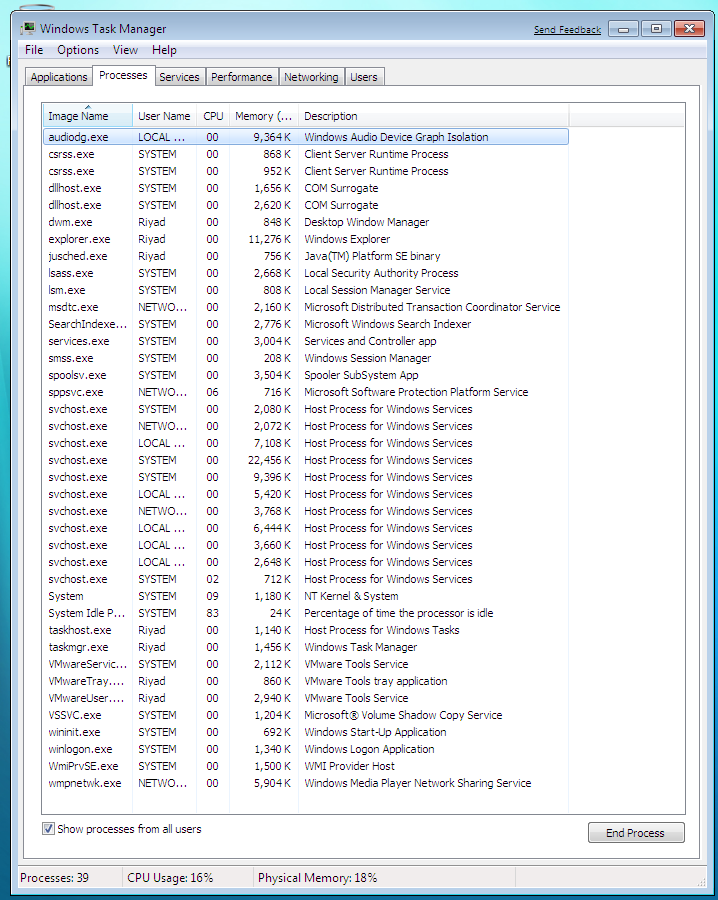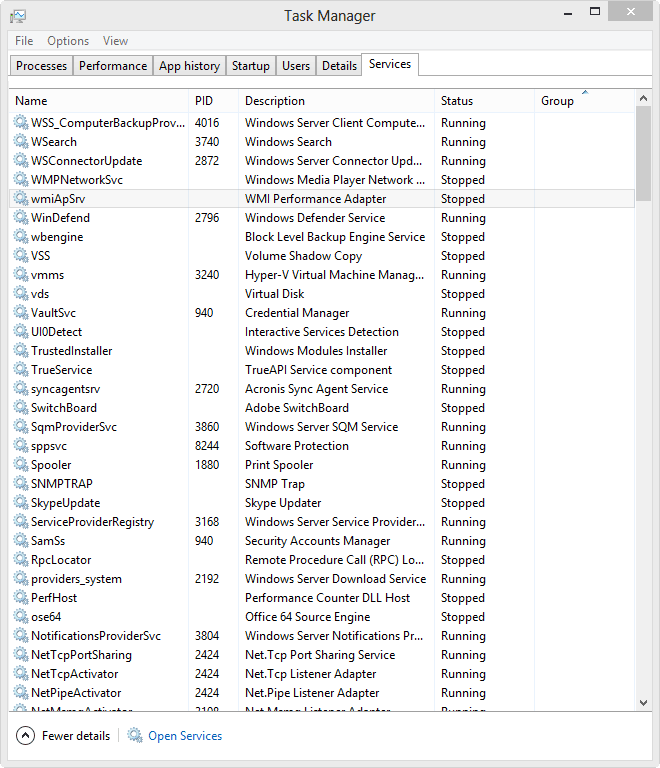-
-
products
-
resources
-
support
-
company
-
Navigating the Task Manager: Applications, Processes and Services
By Steve Horton February 01, 2013task manager, Windows 7, windows 8, Windows XPNo CommentsNavigating the Task Manager
The Windows Task Manager is a great way to see what your PC is up to. It can provide you with all the information you need to determine what programs can be closed that are taking up too much memory, what percentage of your PC is being used by what processes, and find out other information about your computer’s usage.
The Task Manager is a relatively easy tool to navigate. The differences between applications, processes and services can mean you have a better grasp on your PC’s memory usage as well as overall performance, saving you frustration and hardships in the long run. Knowing what to look for in the Task Manager can give you more total control.
Starting Up the Task Manager
There are many ways to access this tool. To boot this tool up, the most common way is to press the Ctrl, Alt and Delete keys altogether at once, then click Task Manager. Another combination is Ctrl-Shift-Esc. Another way to do this (keyboard configurations on certain computers can make key combos slightly challenging) is to open up the Explorer or Start Menu and search for “task manager” in the search bar. An even easier way is to right-click anywhere on the task bar, and from the menu, select Start Task Manager. Once it’s up and running, you’ll be presented a number of areas to look at, each under a different tab that’s easily accessible.
Applications
When you first open up the manager, the first thing you should see is a list of programs running either actively or in the background. The programs tab will allow you to view the full list of apps, and to the right you’ll be able to see what percentage of physical memory and CPU usage that is being used by each program individually. At the bottom of the window are three important sections to look at: the total number of processes running, the total percentage of CPU usage taken up, and the total percentage of physical memory used.
It’s possible to close programs you don’t want running through the Task Manager, but it’s advised that you only do this if you cannot locate the program itself, so you don’t corrupt the program or lose unsaved data.
Processes
The processes tab in the task manager gives you more information than the applications tab. In processes, you’ll see a list of every process running (some programs and Internet browsers can run more than one) and the memory and CPU usage of each one. Just as with the applications menu, processes can be ended manually through the task manager, but a warning will appear that processes are not meant to be ended in this manner.
Ending processes or process trees (multiple processes connected together) can result in problems with running programs in the future and corrupt data. However, like applications, if a process is taking up too much memory and you want to end it, right-clicking and ending it manually is a possible solution, especially if a program is not responding when you attempt to shut it down otherwise.

This is how the Task Manager should look in the Processes tab.
Services
Another area to look at is the services tab, which provides a list of services that perform different functions on the computer. They will either have “stopped” or “running” in the column to the right, and the only options available when altering these is to start or stop them. You also have the option to locate the process or processes associated with them in the Task Manager.

A list of operating services in the Windows Task Manager.
Was this post helpful?YesNoFree Driver Updates
Update your drivers in less than 2 minutes to enjoy better PC performance - Free.
Free Driver Updates
Update your drivers in less than 2 minutes to enjoy better
PC performance - Free.
Didn't find your answer?Ask a question to our community of experts from around the world and receive an answer in no time at all.most relevant recent articles Pin It on Pinterest